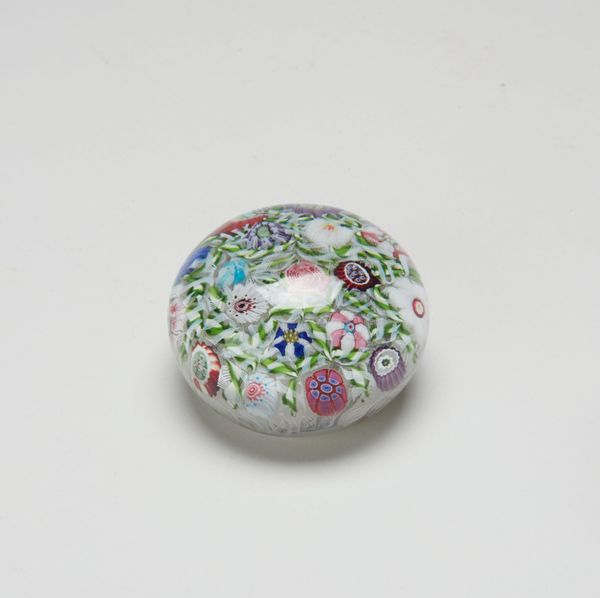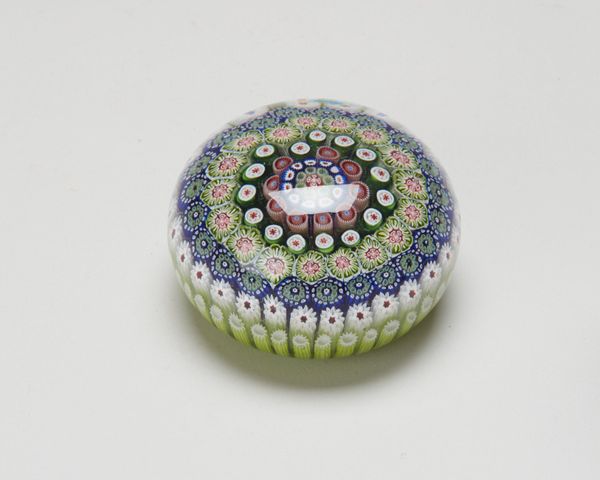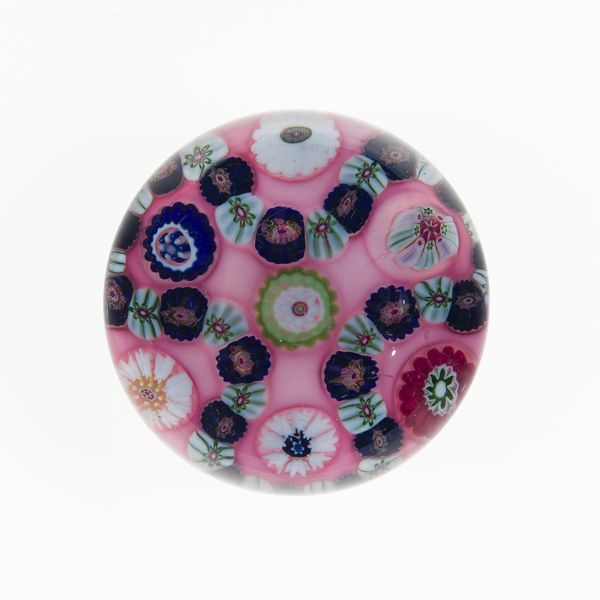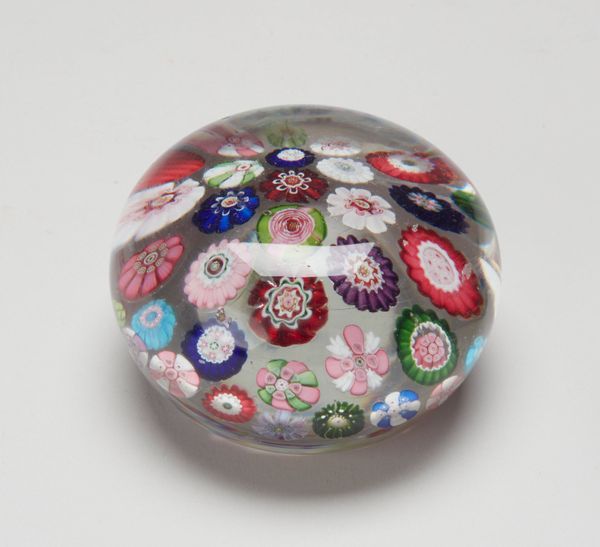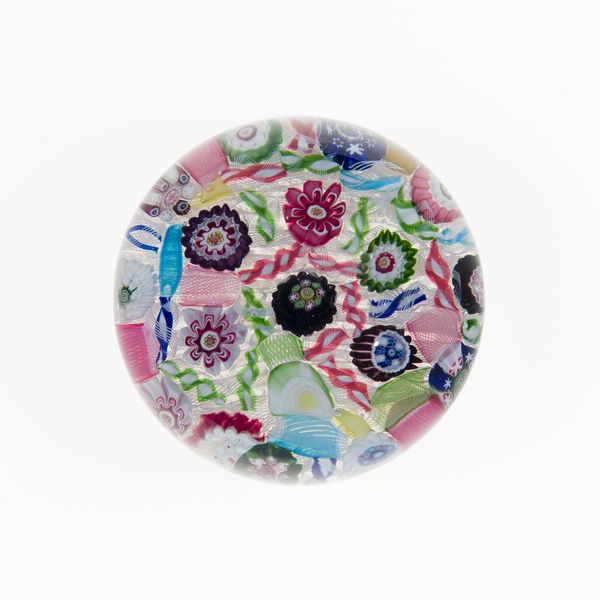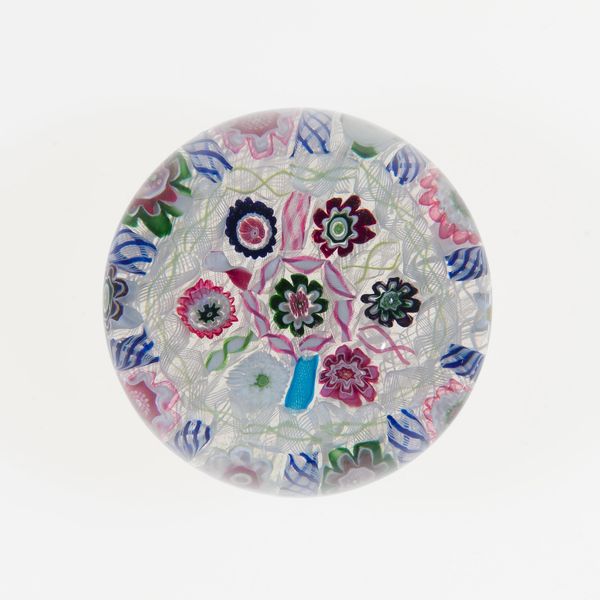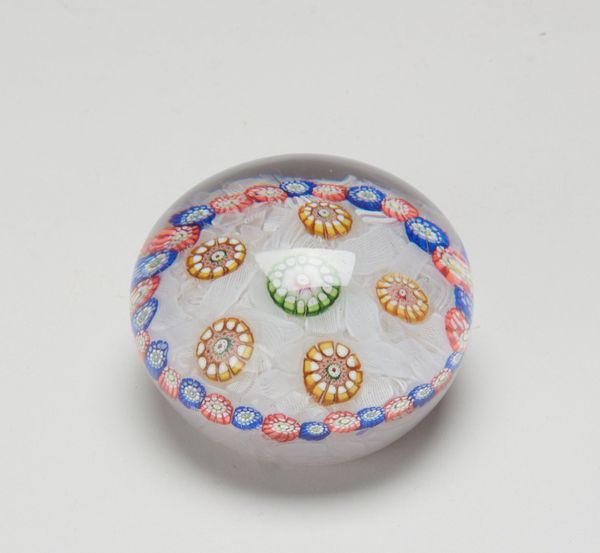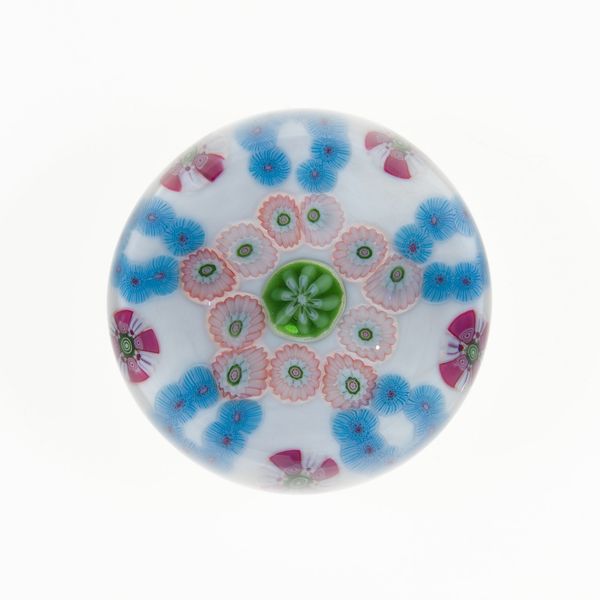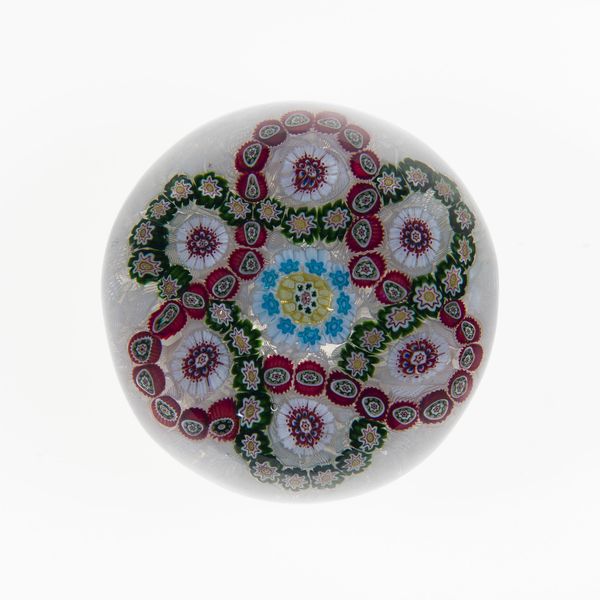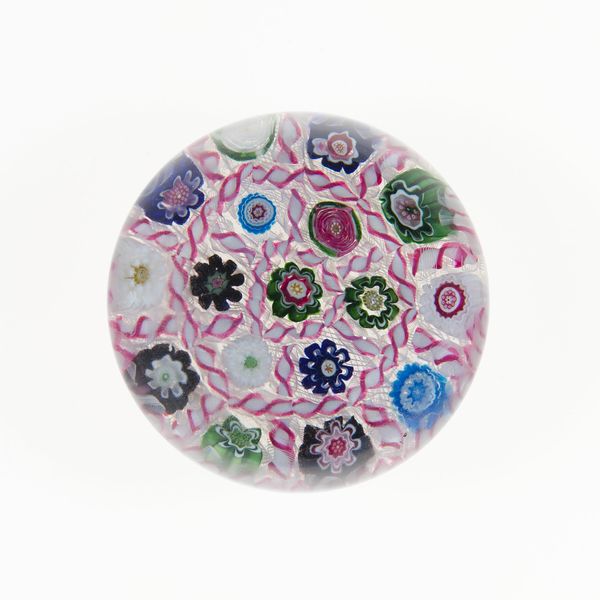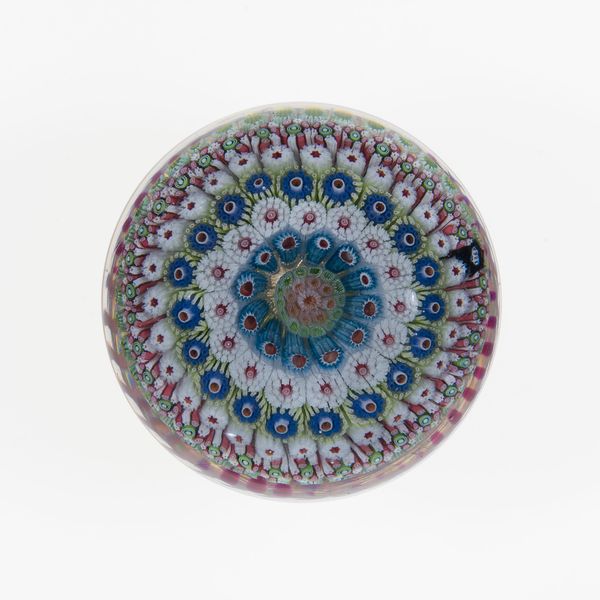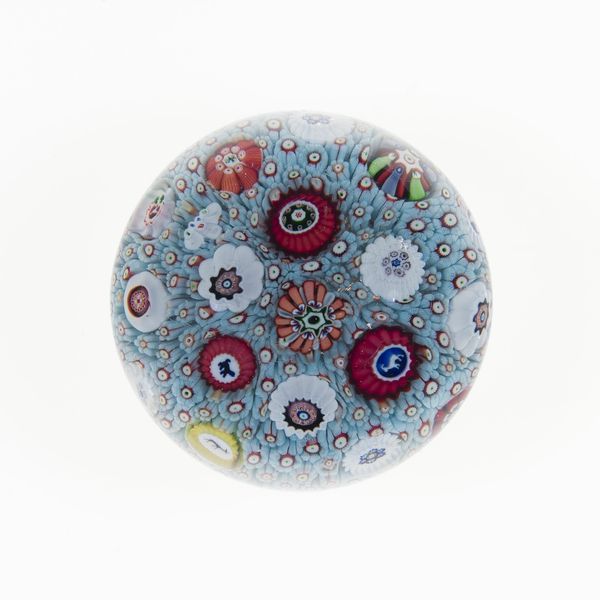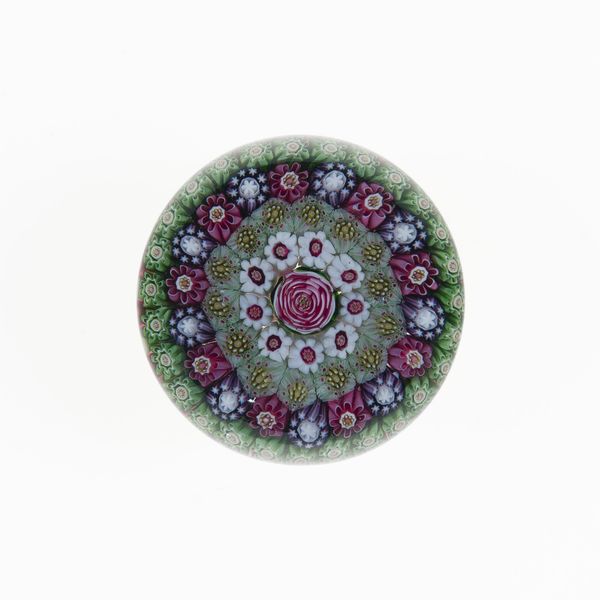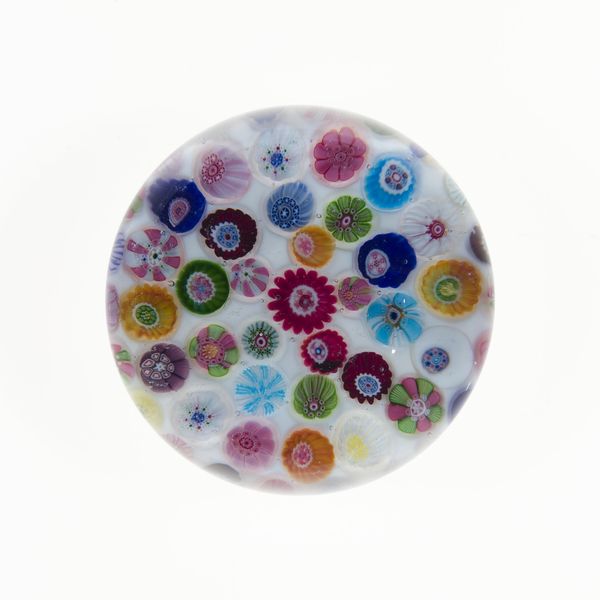
glass
#
glass
#
decorative-art
Dimensions: 1 1/2 x 2 3/4 x 2 3/4 in. (3.81 x 6.99 x 6.99 cm)
Copyright: Public Domain
Curator: Let’s spend a moment with this “Paperweight” crafted around the 19th century, by Baccarat Glass Works. It’s currently part of the collection here at the Minneapolis Institute of Art. Editor: My immediate impression is one of restrained opulence. The clustered flowers, frozen in glass, possess this incredible weight, a tactile reminder of something precious trapped. Curator: That sense of being 'trapped' is interesting, considering the paperweight’s historical context. These objects gained immense popularity in the mid-19th century as symbols of bourgeois luxury, decorating the desks and offices of a rapidly expanding middle class. It was, in many ways, about asserting order and control within a chaotic, changing society. Editor: Ah, I see your point. It is a very ordered microcosm. But those flowers—the central bloom, particularly—draw the eye immediately. Surrounded by the others in a symmetrical design, it really brings to mind traditional motifs associated with prosperity and even immortality across several cultures. The idea of preserving something ephemeral... Curator: Indeed. Consider the artistry involved: these aren't mere decorative flourishes. Glassmaking was a highly specialized and revered skill. Factories like Baccarat aimed to emulate the artistry associated with courtly luxury for wider consumption. The very act of encasing these flowers speaks to a broader aspiration—an aspiration to elevate everyday objects through exceptional craftsmanship. Editor: And you notice, even with mass production techniques evolving, the small imperfections give it a human element. These flowers might not be botanically accurate, but the artisan has distilled their very essence. It touches a subconscious recognition of beauty… Curator: Precisely! And beauty had a function: signaling taste, sophistication, and status. This object reflects the democratizing trends of its time; where luxury wasn't just for aristocracy but something a broader segment of society could aspire to, and own. It became a visible expression of social mobility. Editor: To hold something like this then would've been to grasp not just pretty decoration, but tangible success... A piece of permanence fashioned in a turbulent age. Curator: Absolutely, and I think that enduring appeal to secure a little piece of permanence still captivates people today. Editor: Me too. A beautiful piece that clearly demonstrates lasting symbolism in the glasswork.
Comments
No comments
Be the first to comment and join the conversation on the ultimate creative platform.
